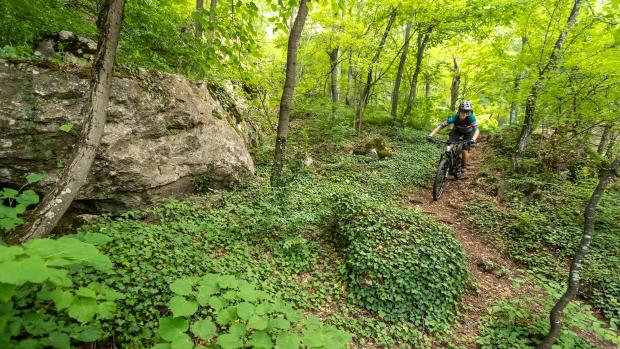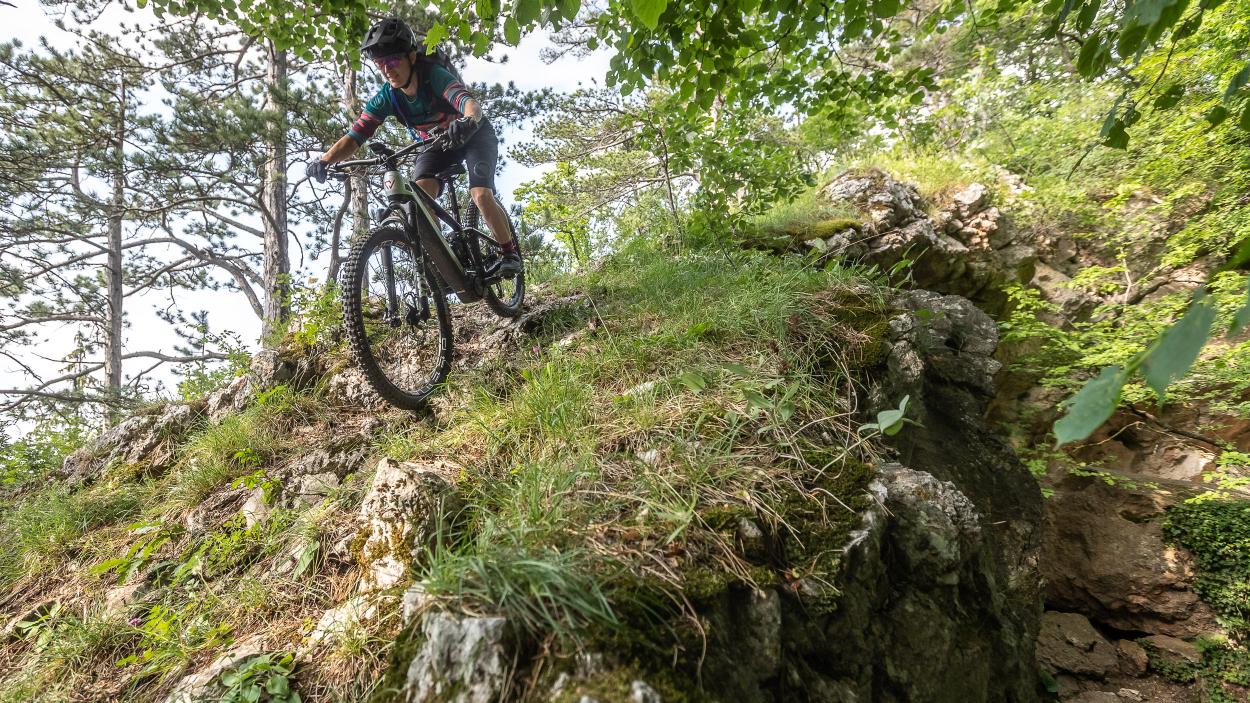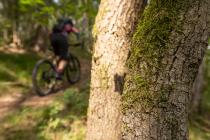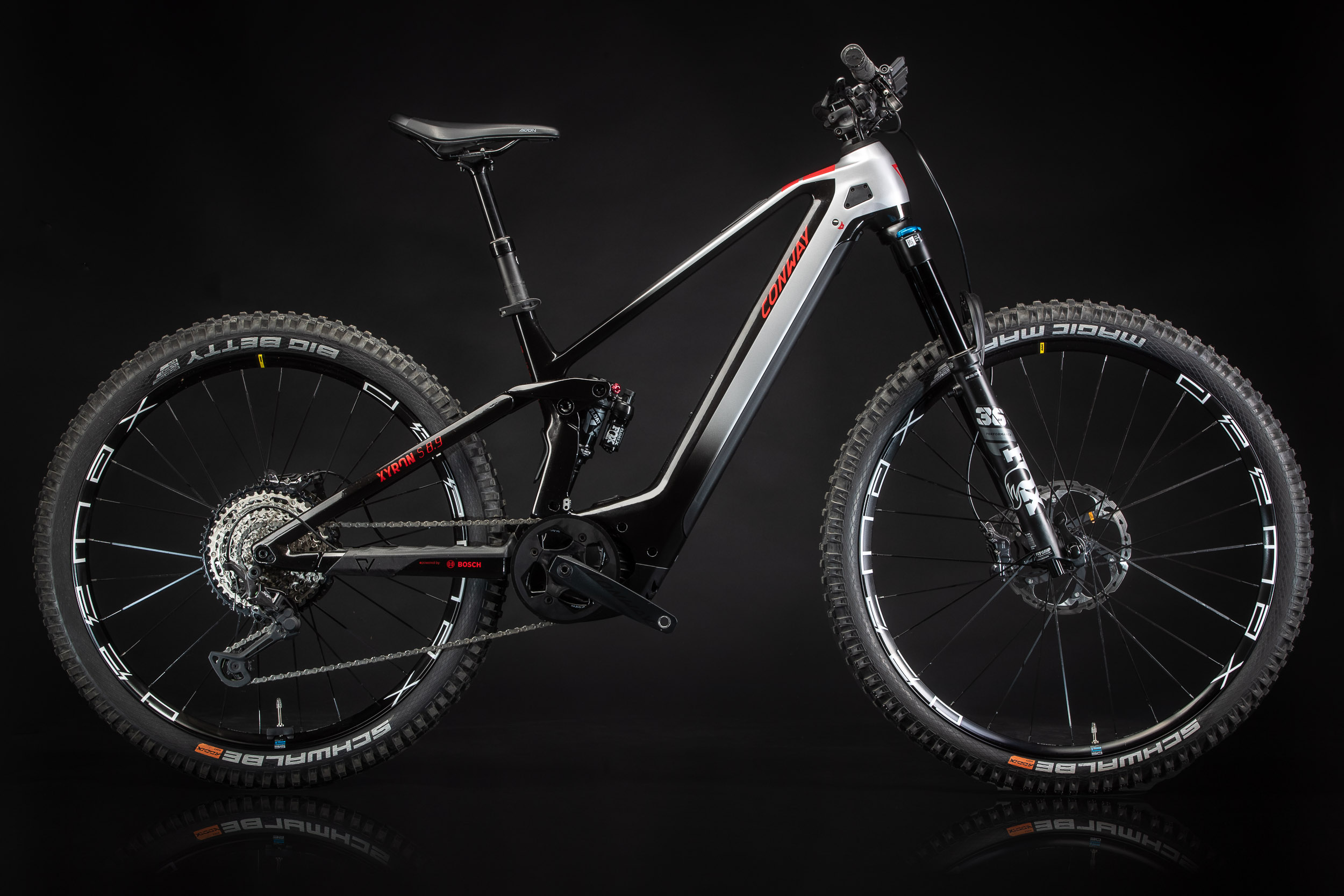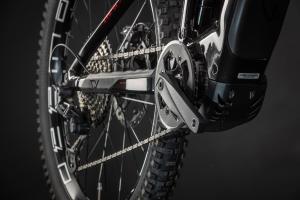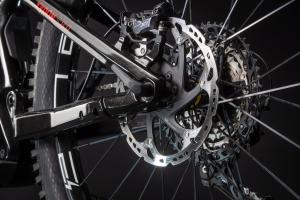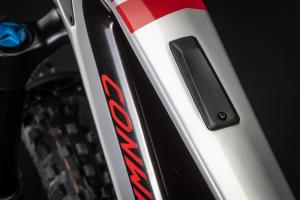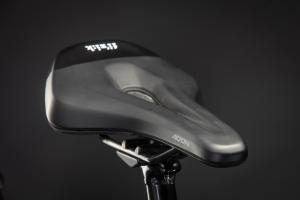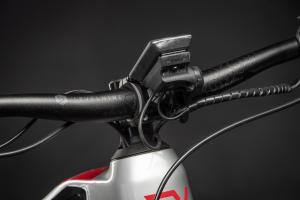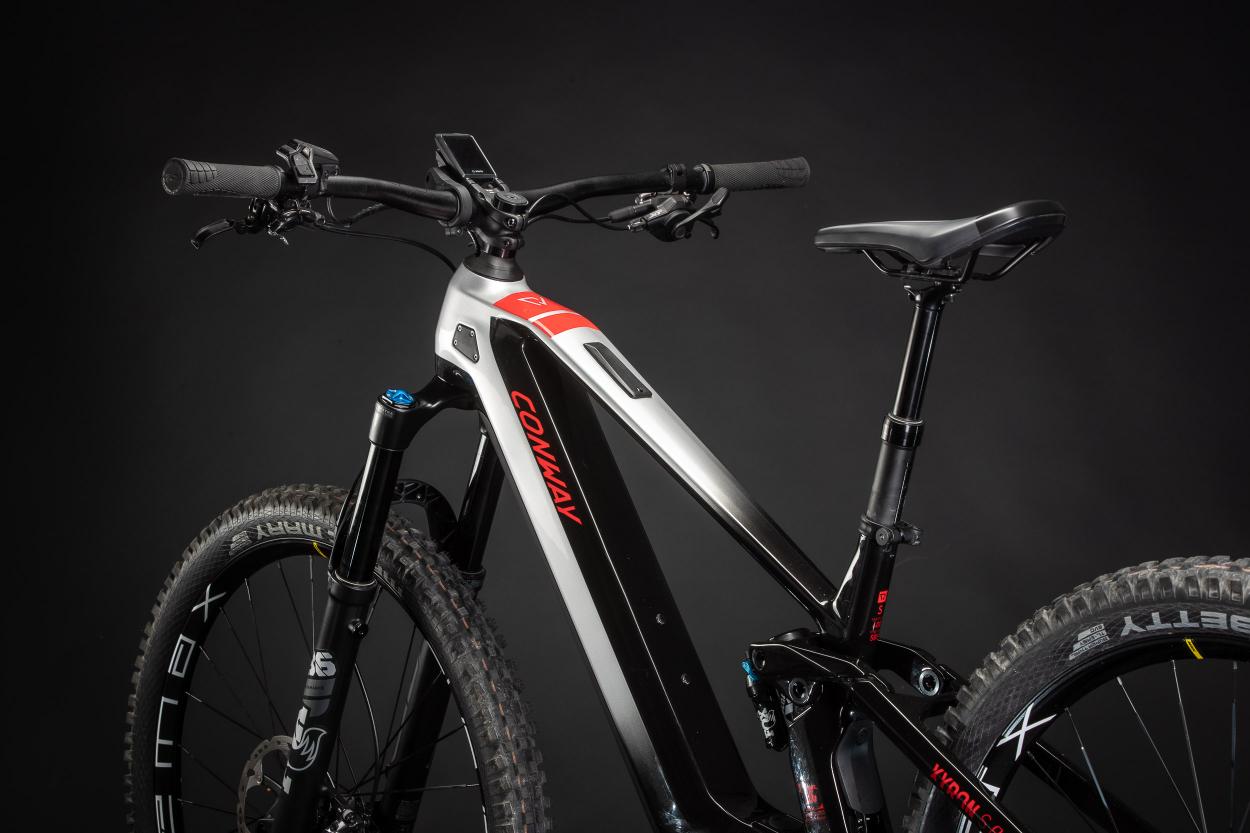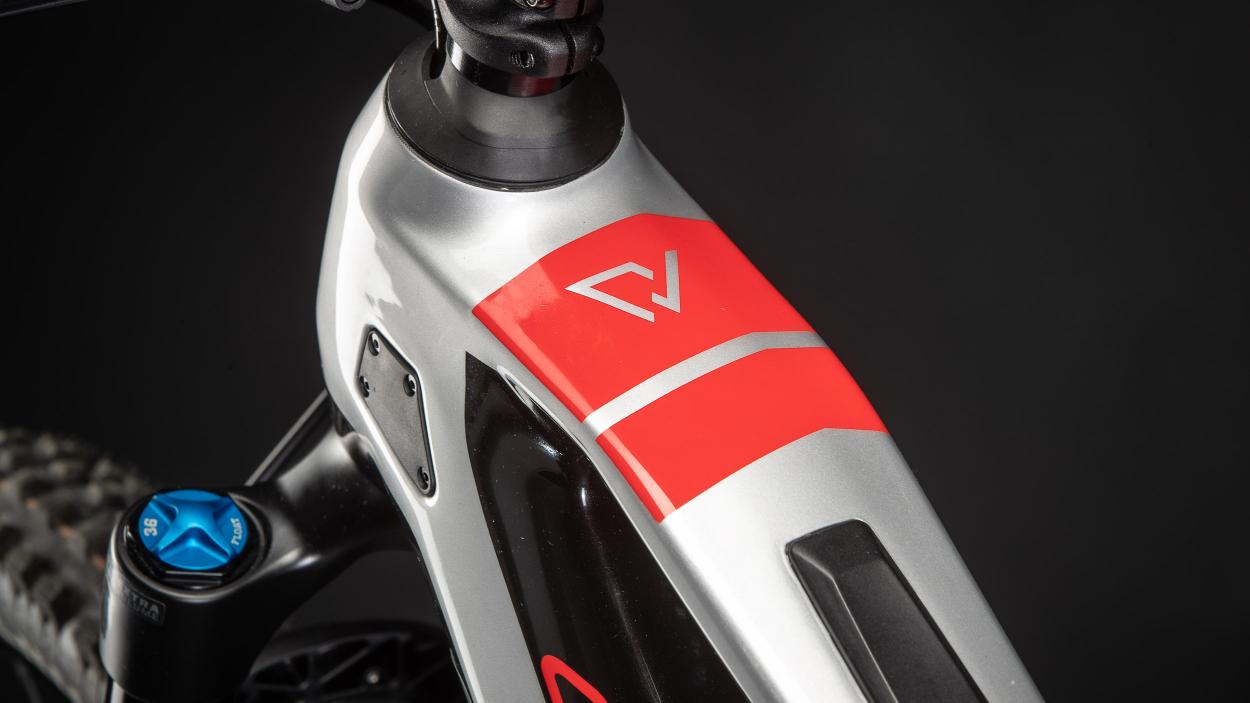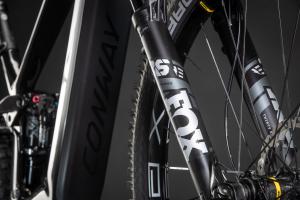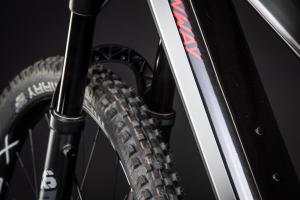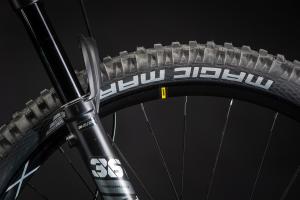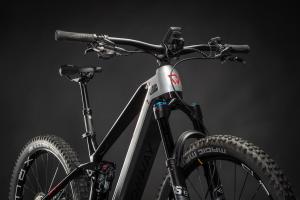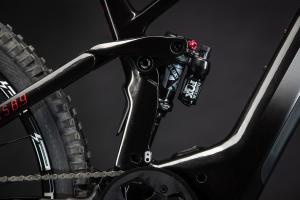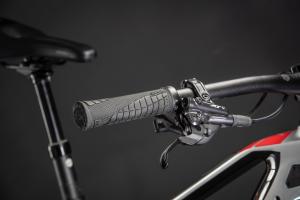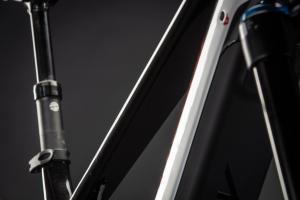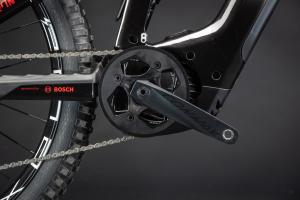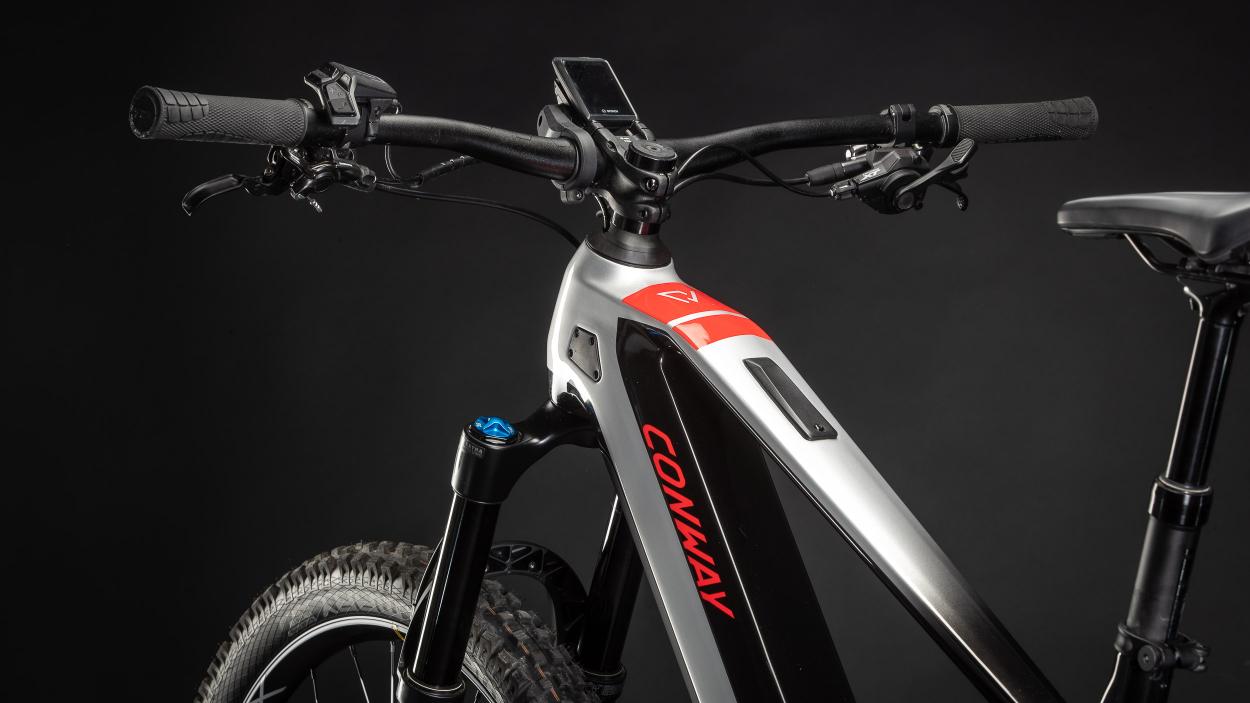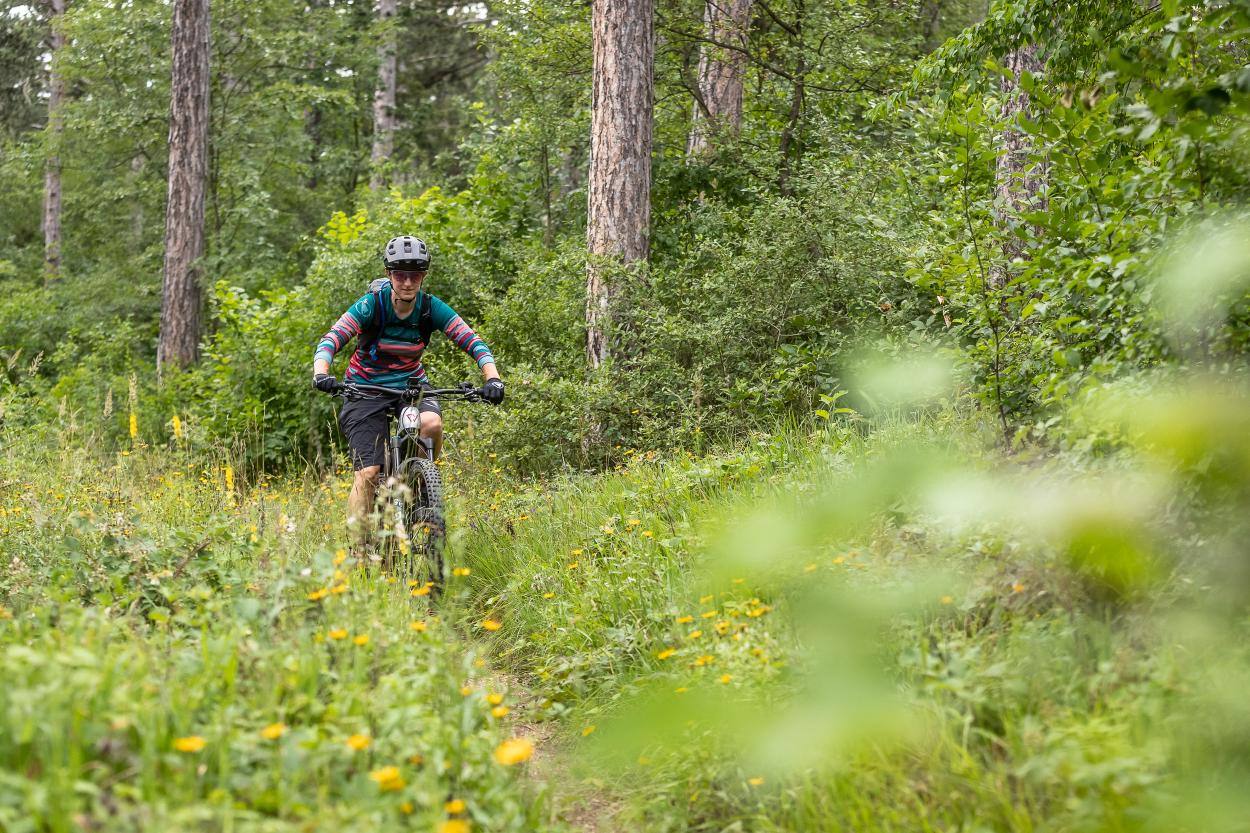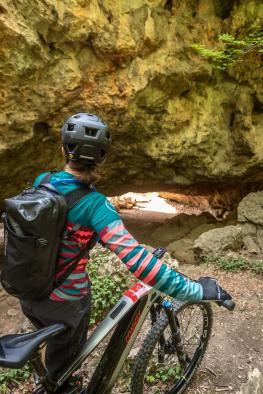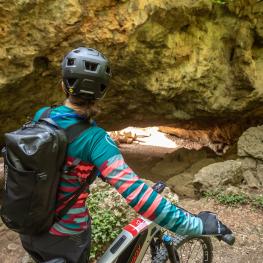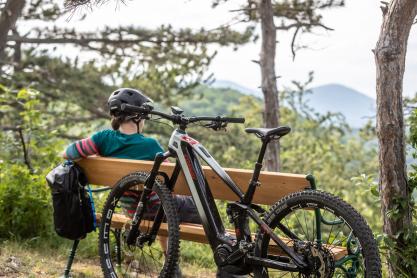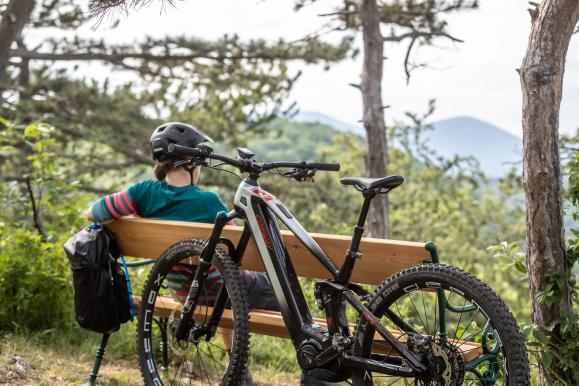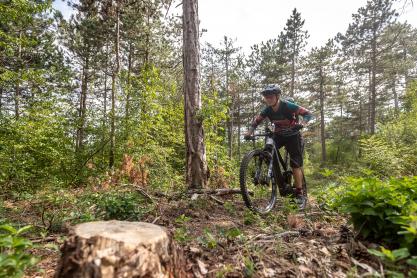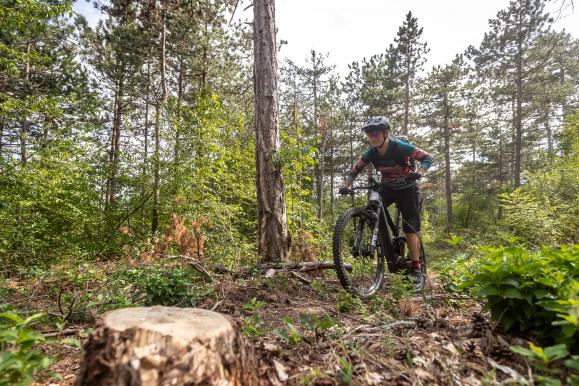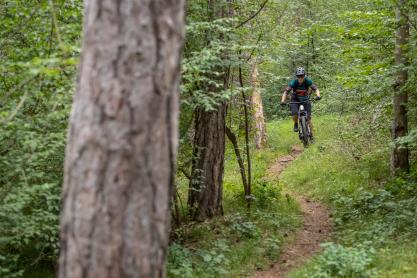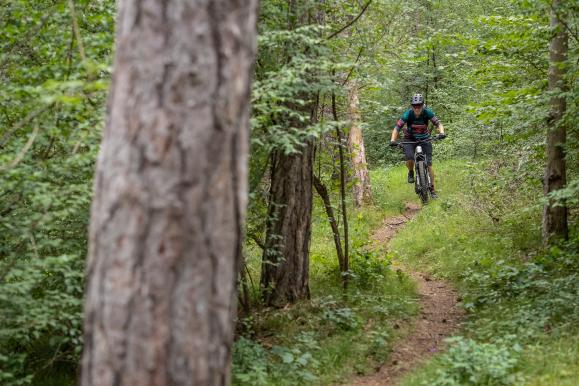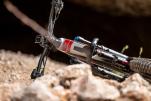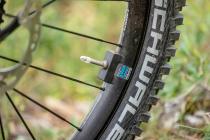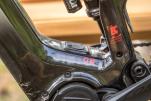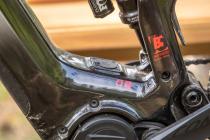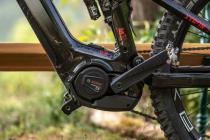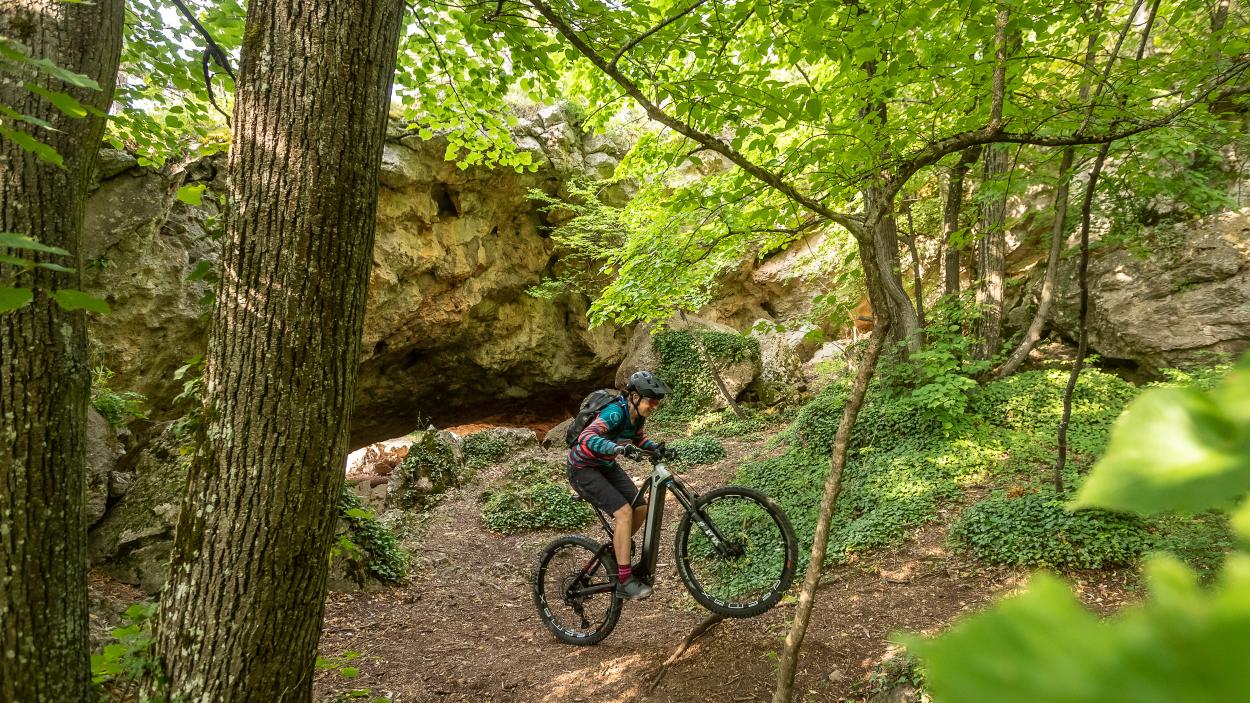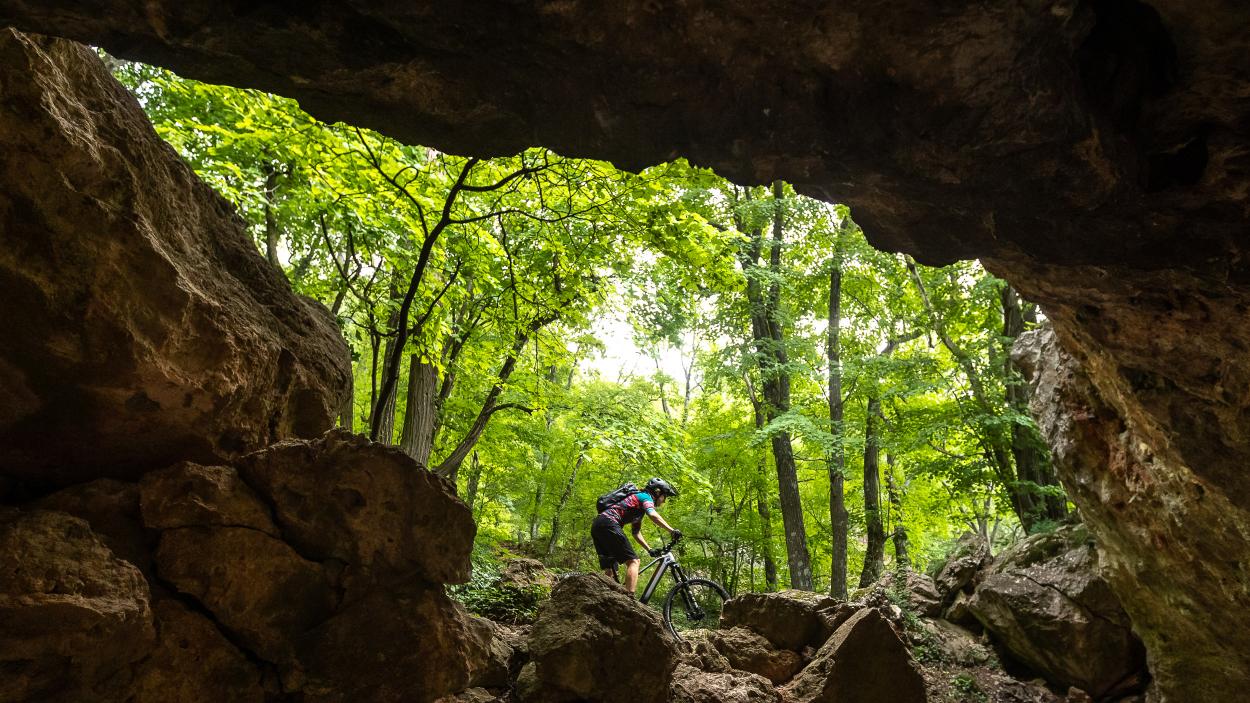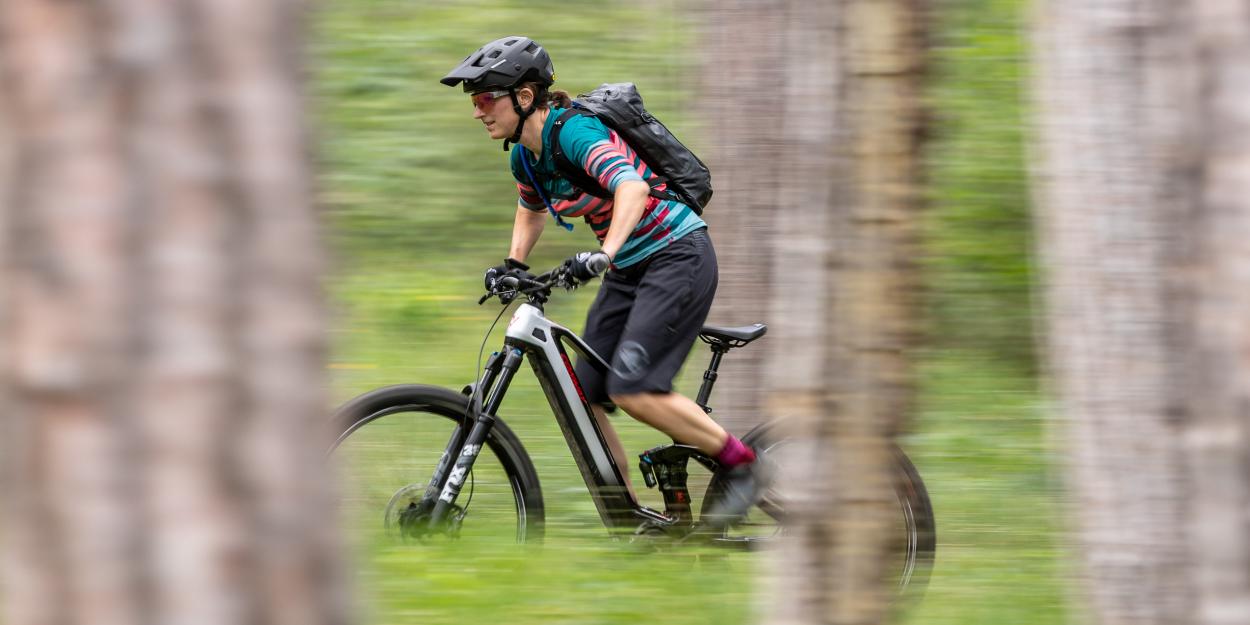
Review: Conway Xyron S 8.9 Carbon
12.08.22 11:16 4.5902022-08-12T11:16:00+02:00Text: NoMannicht mehr sehr blond, immer noch blauäugig, schokosüchtiger denn je
Klicke für alle Berichte von NoManReview: Conway Xyron S 8.9 Carbon
12.08.22 11:16 6.3622022-08-12T11:16:00+02:00 NoMannicht mehr sehr blond, immer noch blauäugig, schokosüchtiger denn je
Klicke für alle Berichte von NoManOnce upon a time there was a German manufacturer with a wholesale background who, since the introduction of an (electric) fully named (e)WME, has become much more desirable for potential customers who do not decide which bike to buy solely based on the image of a brand. Smart concepts, nice shapes and impeccable technology have been strong arguments for the Conway brand since the birth of aforementioned (e-)enduros.
The Xyron, the second full-suspension bike with plenty of travel and power in the line-up of the full-range manufacturer under the roof of Hermann Hartje KG, is no different. This claim comes easy to us, because the potent all-rounder has already been a guest in the Nyx offices several times – mostly as “carrier” for TRP brake tests, as most recently in the spring of this year.
However, up to now we’d only ridden the All Mountain bike in the aluminium version and with the same wheel size respectively: either 27.5 or 29 inches. Never, however, had we tested the carbon bike – with a mullet setup, i.e., 29ers in the front, 650B in the rear. A good reason to grab the opportunity when Conway offered us their Xyron S 8.9 MX Carbon for testing.
Just to make it clear: an “S” in the name of any Conway bike indicates that it is intended for sporty use, in contrast to the now clearly labelled and fully equipped “SUV” version, which combines the (in this case massive) comfort of a full suspension bike with specs suitable for everyday use like lights, mudguards and luggage racks.
The term “MX” refers to aforementioned wheel size mix, which is supposed to combine the better rollover behaviour and the rider’s greater feeling of safety of 29" wheels at the front with the noticeable agility and lightness of 27.5" wheels at the rear.
Faithful companion for your tours and trails
Conway’s description of their Xyron S CarbonThe first impression
For the revised frame, which was needed because Bosch converted their Smart System including a 750 Wh Powertube, mostly the same applies as for its predecessor:
The Xyron's silver-black carbon chassis is dominated by clean shapes, no Bowden cable is visible as they enter the frame via the headset (though it is still possible to retrofit them on the outside thanks to the side inlet). If you applied a ruler, you could almost draw a dead straight line starting from the massive head tube to the slim top tube and the bulky seat stays down to the rear dropout. Almost, because shortly before the top tube meets the cockpit, it is a little bent.
All tubes play skilfully with angular geometries and sharp edges and neuralgic points are safely protected. Only at the front do the carbon fibres break this design language as they bulge into something that could easily accommodate a small beer keg.
Despite the motor, developers have succeeded in integrating the shock and rocker down low in the frame. However, the seat tube had to be split in two to make room for the lower shock mount. A flexible rubber cover on the rear of the seat tube protects the sliding surfaces and seals of the shock, which would otherwise be exposed to dirt and trail debris.
The test bike shows that there is doubtlessly still enough space in the main frame to accommodate large, downhill-oriented shocks and their reservoirs.
As part of the facelift, suspension travel was increased by 10 mm at the rear and by 20 mm at the front to a uniform 160 mm. This means that when it comes to the new Xyron the term “All Mountain” was seemingly interpreted with a focus on downhill riding.
Compared to the eWME, however, it remains much more compact and upright than the E-Enduro, and is therefore not as sporty as the 170 mm bike, whose steering- and seat angles, which are steeper by one (half) degree, are a surprise at first glance.
Comparing the Xyron with the eWME is, however, not as interesting as the comparison between the aluminium and carbon models of this product line. Or rather: was not as interesting.
In the past, the aluminium frame was considered the more relaxed Xyron version and the slightly longer carbon fibre model with a shorter head tube the more aggressive (though still moderate) counterpart. Meanwhile no significant differences are to be found anymore that could not be explained by the different wheel sizes (aluminium: 29", carbon: MX) – at least when merely looking at the geometry data.
However, the carbon Xyron weighs a lot less. The difference between the Xyron S 5.9 and the test bike is a good two and a half kilograms, which is not entirely due to the frame material, but also to the smaller rear wheel and tyre.
Geometry
| Frame size | S | M | L | XL | XXL |
| Seat tube length (mm) | 400 | 430 | 460 | 490 | 520 |
| Top tube length (mm) | 585 | 605 | 625 | 645 | 665 |
| Chainstay length (mm) | 443 | 443 | 443 | 443 | 443 |
| Steering angle (°) | 64,5° | 64,5° | 64,5° | 64,5° | 64,5° |
| Seat angle (°) | 74,5° | 74,5° | 74,5° | 74,5° | 74,5° |
| Stack (mm) | 637 | 637 | 646 | 655 | 664 |
| Reach (mm) | 417 | 437 | 454 | 472 | 488 |
| Wheelbase (mm) | 1194 | 1214 | 1234 | 1254 | 1274 |
As already mentioned, the Xyron is powered by the fourth generation Bosch Performance CX motor – another difference to the Shimano-driven eWME. The necessary power is provided by the currently largest (and heaviest) Bosch battery available, with a whopping 750 Wh.
The battery may either remain in the frame for charging and be connected directly to the power supply via a socket located above the bottom bracket. Alternatively, it may be removed in a few easy steps and taken from the cellar to the flat for charging.
To do so, the robust and reasonably rattle-free protective cover needs to be removed, then the locks are released via both a key and a manually operated latch at the battery. It sounds complicated, but it's actually quite easy, as long as you 1. remember to insert the key, 2. do occasional weight training to practise handling heavy weights and 3. don't let yourself be fooled by the not very flush-fitting cover: It also fits safely when no clicking noise is to be heard and the plastic protrudes slightly.
The perfect rider
So off to the field test. Of course, you could do what an E-mountain bike with 160 mm travel, Piggyback shock and flat angles calls for and hand it over to a proven gravity expert for testing.
You could instruct him to use it to rock the surrounding bike parks and for his occasional enduro rides. You could persuade him to use it occasionally for fun trail rides, or even take it with him to the Ligurian coast for vacation; and the Xyron would of course master all that.
But what would he say in the end, the gravity expert? Probably something like “quite nice, but Fox 36 Float, 25 kilos, budget cranks, relatively high seat tube ... phew.” Bikeboard test riders are (more than) spoiled.
And who would benefit from such a verdict? Ambitious race riders who would love to mix up the enduro scene, ideally on sponsored material? Hardly. Hipsters whose main concern is to boast only cult brands on the trails or at après-bike sessions? Also, unlikely. Ageing backcountry fans who have recently discovered E-mountain bikes to compensate for their dwindling strength?
Tech Specs
| Frame | Carbon | Cassette | Shimano SLX CS-M710, 10-51 Z. |
| Sizes | S/M/L/XL/XXL | Chain ring | Miranda Chainflow 3D, 36 Z. |
| Engine | Bosch Performance CX, 36 V, 250 W | Wheels | Mavic E-Deemax, 29" front/27,5" rear, 15x110/12x148 mm |
| Battery | Powertube 750 Wh | Tyres | Schwalbe Magic Mary Soft 29x2,4"/Big Betty Soft 27,5x2,6" |
| Display | Kiox 300 | Headset | Acros |
| Front suspension | Fox Performance 36 Float, 160 mm | Stem | Level Nine Team A-Head, 31,8 mm; 40 mm |
| Rear suspension | Fox Float X, 160 mm | Grips | SQlab 70X |
| Crankset | Miranda Epsilon, 165 mm | Saddle | Fizik Aidon |
| Handlebar | Level Nine Race Riser, 9°, 31,8 mm; 780 mm | Seatpost | Contec Drop-A-Gogo, 31,6 mm |
| Brakes | Shimano Deore XT BR-M8120, 4-Kolben, front/rear 203 mm | Chain | Shimano SLX CN-M7100, 12-f |
| Shifters | Shimano Deore XT SL-M8100 | Weight | 24,1 kg (BB weighed) |
| Rear derailleur | Shimano Deore XT RD-M8100 Shadow Plus, 12-f | Price | € 6,499.95 SRP |
The latter is perhaps the most likely, but let's be honest: Wouldn't it be much more realistic to give such a bike to someone who doesn't know anything about downhill riding, who doesn't have enough courage for jumping and tricks and doesn't have enough time to indulge in chassis optimisations? To give it to someone who uses it to ride to the office on flat asphalt and, also, regularly spends time on cycle paths or multisport promenades like Danube Island? Who needs the suspension travel at most to iron out his own mistakes due to poor riding technique and can't say much more about the bike than “nice”?
In a nutshell: Wouldn't it be more honest to test the Conway bike as what a presumably big part of its buyers turns it into in everyday life: an overpowered, overequipped comfort full suspension bike?
Of course not. But something in between would be logical. Please meet NoMan.
I need to admit that my maiden ride took place on the way home from the office on the dead flat road along the Viennese Neustädter Kanal. But this is what happens to many test bikes I’m in charge of, because at the end of the day there is usually not enough sunlight for a time-consuming loop over the mountains. The planned visit to one of the surrounding trail areas like Hohe Wand Wiese, Wexl or – brand new! – Burgenland fell victim to my writing workload that is extremely hight at this time of the year. And the vacation I took the Conway bike with me on was not spent in some Ligurian El Dorado, but in the Upper Austrian Salzkammergut area.
Nevertheless, I managed to squeeze in a few fun evening rides, proper mountain tours and explored the varied surroundings by bike. And this is what these rides came down to:
The field test results
From the first saddle contact to the last stone step ridden (yeah, I did it! I finally brought myself round to ride the final key section of the Ewige Wand (Eternal Wall), which had been a mental hurdle for me until then – for reasons I don't really understand; though admittedly, it got somewhat defused) the Xyron seems to be built for a smooth and calm riding experience. The riding position is compact and relatively upright, nevertheless the rider sits well positioned above the bottom bracket, the chassis is forgiving, the handling good-natured, and you are always in total control of the bike due to an efficient rear suspension, the Twentyniner front and the door-wide handlebars.
By the way, I would have needed to shorten the handlebars a bit for ergonomic reasons actually; but even the other test rider who is very broad-shouldered considered them too wide. A size-dependent specification would therefore be appropriate.
The 160 mm of travel’s full potential is of course never tapped in regular everyday touring. But the Fox suspension also remains completely unimpressed by bumpy, blocked terrain, which is best tackled at high speed, or by larger steps and drops; as well as by the jumps and airtime my riding skills allow for (but to be honest, this is not a benchmark).
In my opinion the simple Float combo is potent enough for even a little crispier all-mountain riding, and frankly speaking I am glad that adjusting the bike is no rocket science.
The rest of the specs follows Conway's well-known principle of combining proven, functional parts into a coherent overall package – from the almost full XT group-set including 4-piston disc with 203 rotors to the robust Mavic E-Deemax wheels with 30 or 35 mm inner width to Schwalbe's grippy and stable “girls combo” Magic Mary/Big Betty with soft rubber compound and Super Trail casing in 2.4 or 2.6" width.
Contec's Drop-a-Gogo variable seatpost, like the bike itself from the product range of Conway's parent company Hartje, fits seamlessly into this picture of smoothly working components that make up for their lack of eye-catching potential with reliability and – always relevant in the event of a puncture – extensive availability.
Bosch's solid Performance CX motor with its four modes and mighty 85 Nm of torque also makes perfect sense on the Xyron S. However, its long-range 750 Wh Powertube adds a lot to the weight, and the 160 mm full suspension bike, carbon frame or not, 650B rear wheel or not, is anything but a lightweight. But the power this overall package needs especially when accelerating, is easily compensated for by the potent motor.
The market leader is known for its powerful propulsion but performs in a more sensitive way, too, when in eMTB mode. All in all, however, it gives an additional push rather than to sensitively amplify the riders own power. This is especially important to bear in mind on more demanding uphill trails – i.e.: choose your line with foresight.
Even on rough downhill terrain, the notorious freewheel rattling is hardly noticeable! As the battery cover/integration and the well-protected frame hardly make any noise either, this bike glides downhill in almost heavenly silence. Uphill you’ll hear the Bosch-typical noise level that of course depends on the mode and gear you’re riding in.
I didn't really come to like the new Smart System control unit until the end of the test phase – too many switches, too many options and, as a result, too much information that you could get from the – basically clean – Kiox display.
I'm clearly a fan of reduced versions, like those Bosch has just presented for 2023 with a system controller that can be integrated into the top tube, including a mini remote. By the way, the frame of the Xyron is already set for this next level, as can be seen, for example, from the recess on the top tube, which is currently still without a purpose.
All in all, it's a bit like “safe sex”: outright sensible and still fun.
Given the geometry data, the riding behaviour holds no surprises. The great strength of the Xyron, as the long wheelbase and rear triangle as well as the flat steering angle suggest, lies in its smooth running.
Coupled with its good 24 kilograms and the potent tyres, nothing can really get this bolide off track. The smaller rear wheel, however, provides just enough playfulness to prevent the all-rounder from completely turning into a bus.
Downhill and through wide curves, the ride is as relaxed as can be, with sufficient mental and real safety reserves. And going up steep hills also works very well, because I'd rather practise wheelies than have the front wheel come off the ground unintentionally.
Narrow bends or rapid changes of direction, on the other hand, are not the Conway's favourite discipline (nor mine, especially as I touched tree trunks several times with the handlebars that were too wide for me). To master them and get the bike around the corner, you need vigour, determination, and physical effort.
And for trial-like rides in alpine terrain, for inch-by-inch approaches to key sections or spontaneous corrections of the ideal line, you’ll probably find more suitable, i.e., more agile, and more responsive bikes. But that brings us back to the target group discussion from the beginning of this piece: if you expect this from your E-full suspension bike, you'll go for other brands anyway.
All in all, it's a bit like “safe sex”: outright sensible and still fun.
Conclusion
| Conway Xyron S 8.9 Carbon | |
|---|---|
| Modelljahr: | 2022 |
| Testdauer: | 6 Wochen |
| Preis: | € 6,499.95 SRP |
| + | clean, straightforward frame, Bosch MY23-ready |
| + | comfortable, central riding position |
| + | comfort and control |
| + | smooth ride and feeling of safety |
| + | solid specs |
| o | when does reason become sexy? |
| BB judgement: | Not small, but oh my! |
In order to characterise the Xyron carbon on point – and in refreshingly superlative-less language – just take a look at the manufacturer’s website.
The bike with its large battery is the capable all-rounder and faithful companion for your tours and trails, it reads, and with its sporty-comfortable geometry and a swallow-happy chassis your tours are not only more fun, but also automatically longer. That's it!
Well-specced and reasonably priced, the potent Conway bike won’t win over technically experienced gravity fans or individualists looking for something special. But it may well support returners and beginners with its good-natured, relaxed handling characteristics.
And even those who venture further into the trail will appreciate the undeniable feeling of safety and some suspension travel reserves.
| The first impression |
| Geometry |
| The perfect rider |
| Tech Specs |
| The field test results |
| Conclusion |
| Weiterführende Links |
| Kommentare |



